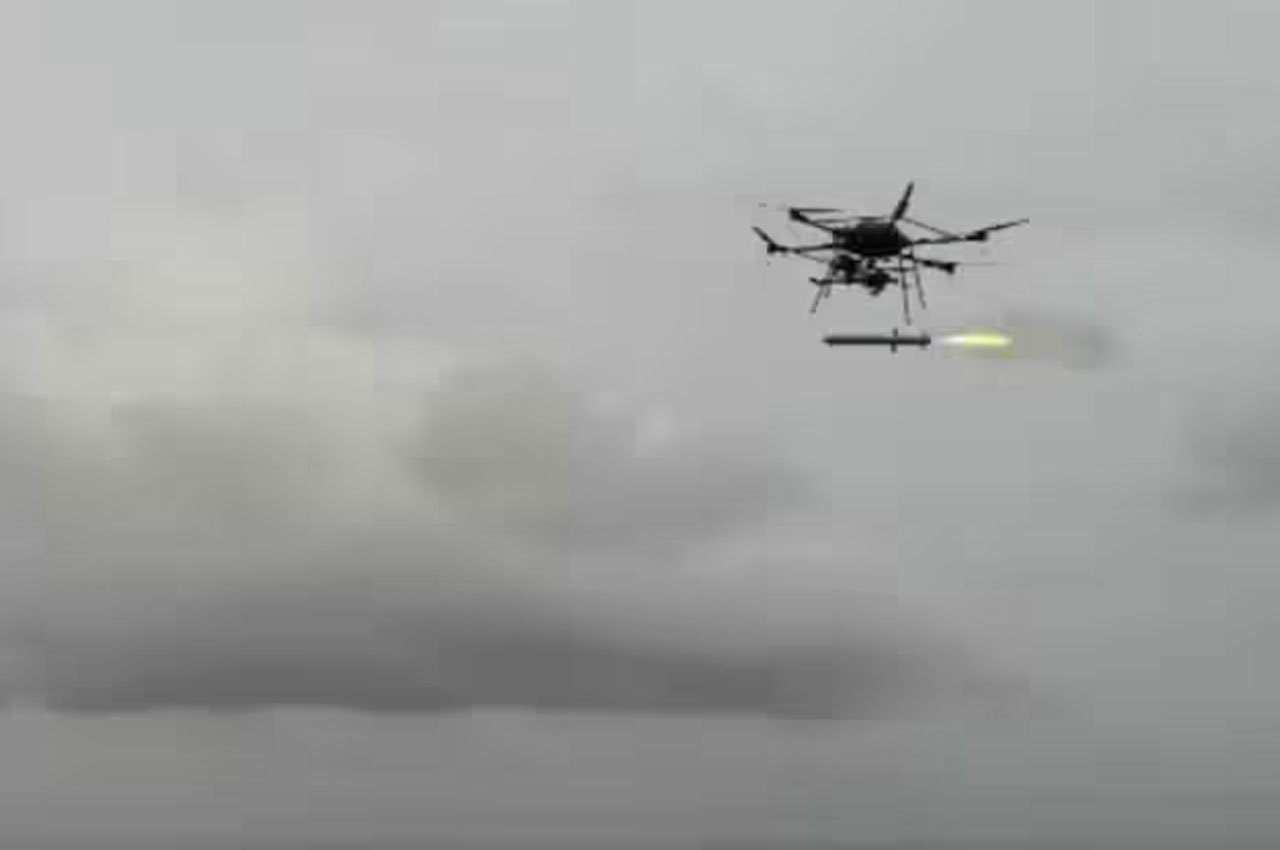On July 25, 2025, India achieved a significant milestone in defence innovation as the Defence Research and Development Organisation (DRDO) successfully test-fired the UAV-Launched Precision Guided Missile (ULPGM‑V3) in Kurnool, Andhra Pradesh. Conducted at the National Open Area Range (NOAR), this test marks a critical step towards integrating precision weaponry with unmanned aerial platforms and enhancing tactical operational flexibility.
UAV-Launched Precision: The ULPGM‑V3 Breakthrough
The ULPGM‑V3, also referred to as ULM‑ER (Unmanned Launched Munition – Extended Range), is a lightweight, laser-guided anti-tank missile specifically engineered for drone-based deployment. Weighing approximately 12.5 kg, it is powered by a dual-thrust solid motor and offers an operational range of up to 4 km in daylight and about 2.5 km at night.
The missile features a passive imaging infrared seeker, providing a “fire‑and‑forget” capability. It is also equipped with a two-way datalink, enabling mid-course guidance and updates. Designed with modular warhead capability, the missile can be adapted for multiple tactical roles—ranging from anti-armour and bunker penetration to high-lethality zone engagements.
Indigenous Development Under Atmanirbhar Bharat
The ULPGM‑V3 has been developed entirely in India by DRDO’s premier research laboratories, including the Research Centre Imarat (RCI), Terminal Ballistics Research Laboratory, and High Energy Materials Research Lab. The project exemplifies India’s strategic thrust toward self-reliance in defence under the Atmanirbhar Bharat initiative.
Several industry partners played a vital role in the missile’s development and testing. Bharat Dynamics Limited, Adani Defence, and a network of MSMEs and start-ups contributed to the system integration and component manufacturing. The UAV used in the testing phase was developed by NewSpace Research Technologies, a Bengaluru-based defence tech company focused on autonomous aerial systems.
Strategic Implications for India’s Armed Forces
The successful test of ULPGM‑V3 is expected to significantly enhance the combat capabilities of Indian infantry and special forces, particularly in high-altitude and rugged terrains like Ladakh or counter-insurgency zones. The missile’s lightweight design allows it to be carried and launched from compact UAVs, providing greater strategic reach without exposing personnel to direct enemy fire.
Military analysts see ULPGM‑V3 as a potential force multiplier for India’s drone warfare strategy. Its integration with UAVs enables precision strikes in areas where conventional artillery or manned operations face logistical challenges or tactical risks. The missile’s compact structure and modular payload also allow for quick deployment and flexible mission planning.
Defence Minister Hails Industry Collaboration
Defence Minister Rajnath Singh lauded DRDO and its industry partners on social media following the successful test. He called it “a major boost to India’s defence capabilities” and emphasized the importance of public-private collaboration in achieving indigenous technological breakthroughs. The Minister highlighted that the ULPGM‑V3 reflects India’s readiness to develop, produce, and deploy world-class defence technologies in-house, aligning with the ‘Make in India’ and Atmanirbhar Bharat visions.
NOAR as a High-Tech Testing Hub
Kurnool’s National Open Area Range (NOAR) has increasingly emerged as a key test facility for India’s defence technology initiatives. In recent months, the range has been used to validate various cutting-edge systems, including high-energy laser weapons and counter-drone technologies. The successful ULPGM‑V3 trial adds another feather to NOAR’s cap, positioning it as the epicenter of India’s future battlefield innovation and experimentation.
What Lies Ahead for ULPGM Variants
Following ULPGM‑V1 and V2, the V3 version marks a substantial improvement in both capability and adaptability. DRDO is now working on integrating this version with other long-range UAV platforms developed by Indian firms. Upcoming iterations may see enhanced guidance systems, more versatile warheads, and deeper integration with AI-enabled battlefield command and control networks.
These developments not only strengthen India’s armed forces but also establish a foundation for exporting indigenous missile technology in the future, contributing to India’s growing stature as a global defence manufacturing hub.
Photo Credit: NDTV
For more stories click here
Follow us for latest updates:




